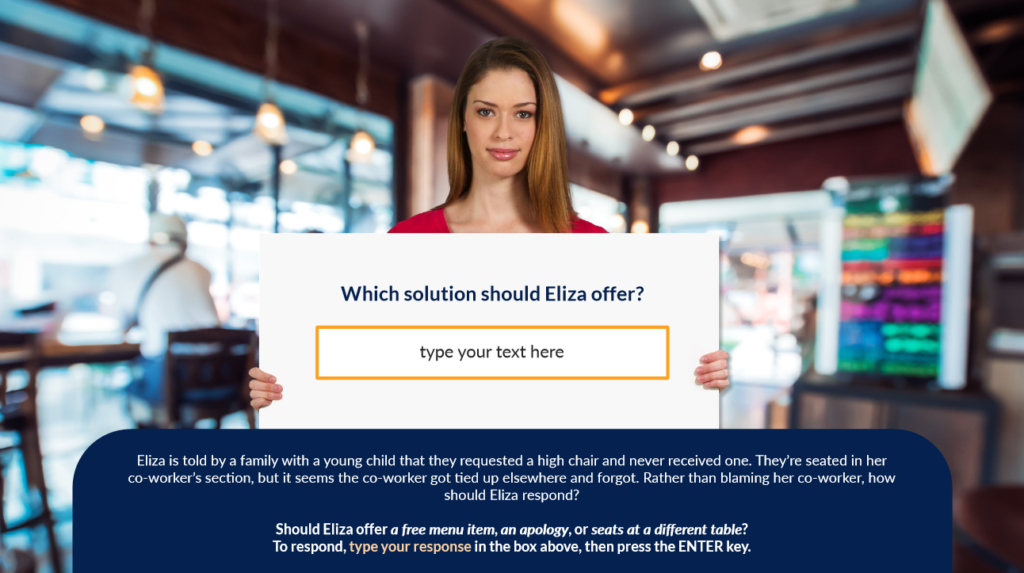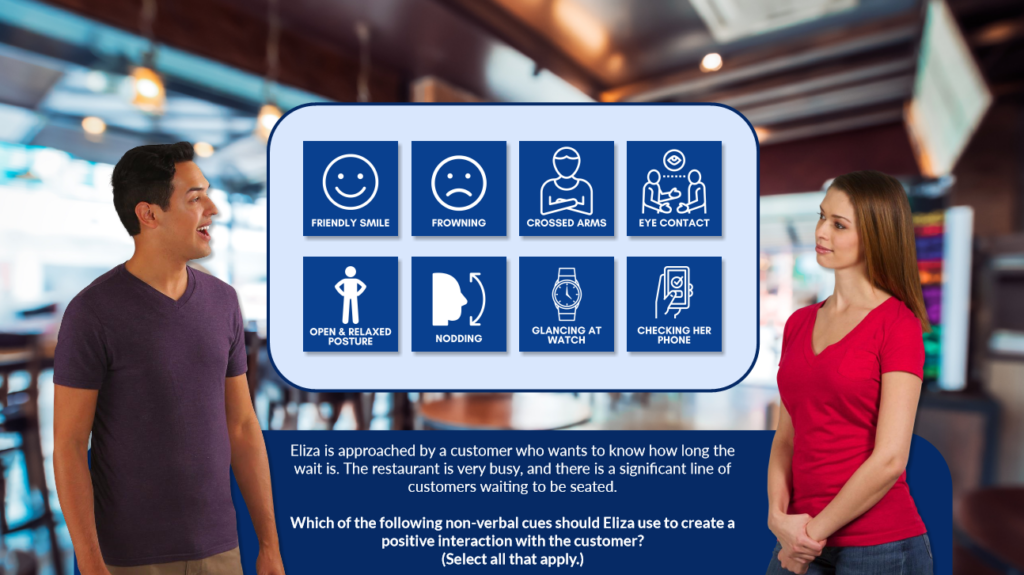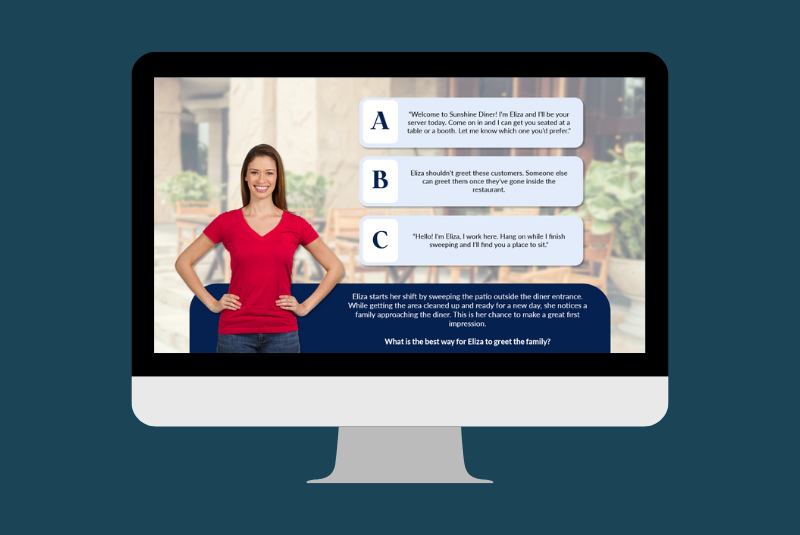In this scenario-based summative assessment, join new hire Eliza for a busy weekend morning at the restaurant where she works.
Authoring Tool: Articulate Storyline 360
Overview: This scenario-based assessment takes place after completing all modules and tests the learner’s ability to apply the skills learned during the Superior Service online course. These skills include active listening, appropriate verbal communication, and effective use of non-verbal cues. Learners must score 80% or higher to pass this portion of their onboarding training. It was designed for Storyline 360, with use of generative AI (ChatGPT) during the question development phase. This part of the process is discussed below.
Features: The assessment includes the following features:
- 10 scenario-based questions
- Relevant restaurant characters, setting, and questions
- Self-grading
- Instant and custom feedback to learners’ responses
- Varied question types:
- Multiple choice
- Multiple choice “pick many”
- Fill-in-the-blank
- Drag and drop sequencing
Process: When developing any assessment, especially a final assessment, I return to the learning objectives for the course and use these as guideposts as I write questions. This ensures that I cover everything that needs to be assessed now that the learner has completed the experience. I ask myself: “What skills were learned during this course?” and “In which situations would those skills be used?” Then, I develop the character(s) who will appear during the scenario. These characters must be relevant and relatable to the learner. I make sure that they have a similar role at work, thus ensuring that the learner can step into their shoes. Another consideration when writing characters is diverse representation; I consider the demographics of my target learners, noted during the needs assessment, and select a character with these in mind.
To keep the assessment engaging, as well as provide different cognitive challenges, I devise a variety of question types. More interactive formats such as pick many, fill-in-the-blank, and sequencing interactions are interspersed among standard multiple choice questions. I also carefully consider the feedback that results for each response so that the learner is validated for their correct selection or receives guidance if their choice is incorrect.
Use of Generative AI in Assessment Design
During the process of writing questions for this assessment, I utilized ChatGPT to give me ideas for customer service situations which might arise during the main character’s busy workday at a restaurant. I find that generative AI tools can provide a great launchpad when writing questions. Sometimes it suggests ideas that I would never have come up with on my own, especially since I’ve never worked in the restaurant industry before. When using any type of AI tool, it’s important to read carefully, use AI’s suggestions judiciously, and revise, revise, revise. ChatGPT can’t approximate the human voice or the level of personalization that an instructional designer can – and must – bring to the table in any learning experience. But it can help you generate assessment questions with variety and relevance, and in this way is a useful tool and timesaver.


Related Resources: Superior Service Online Course

